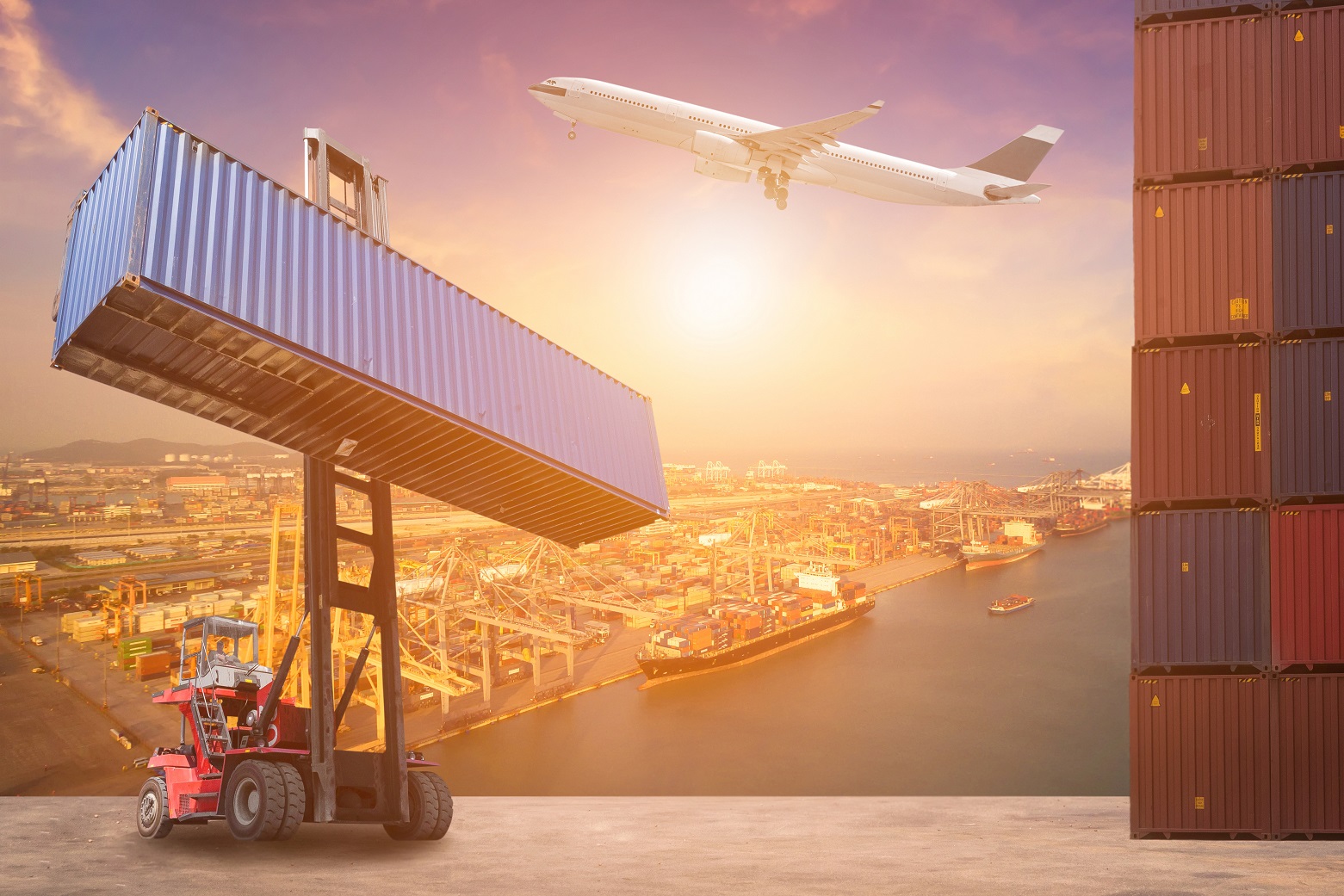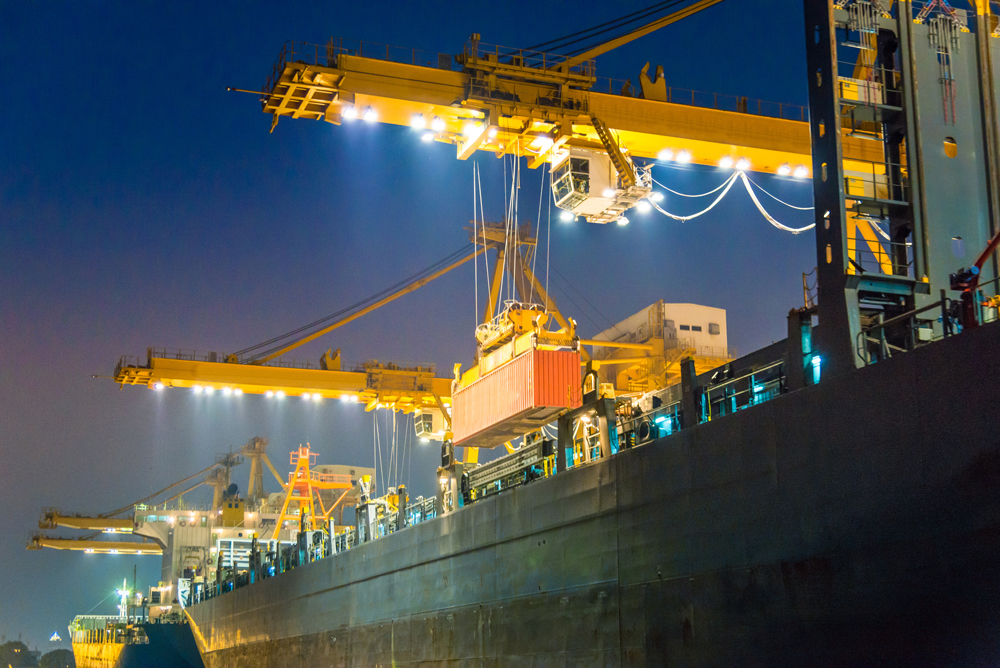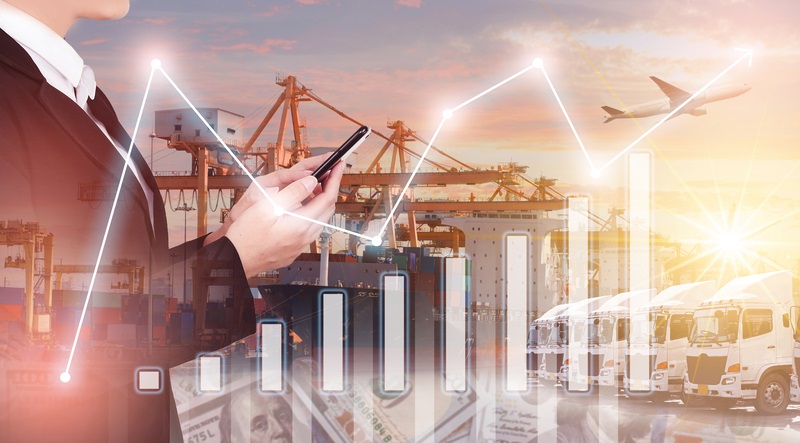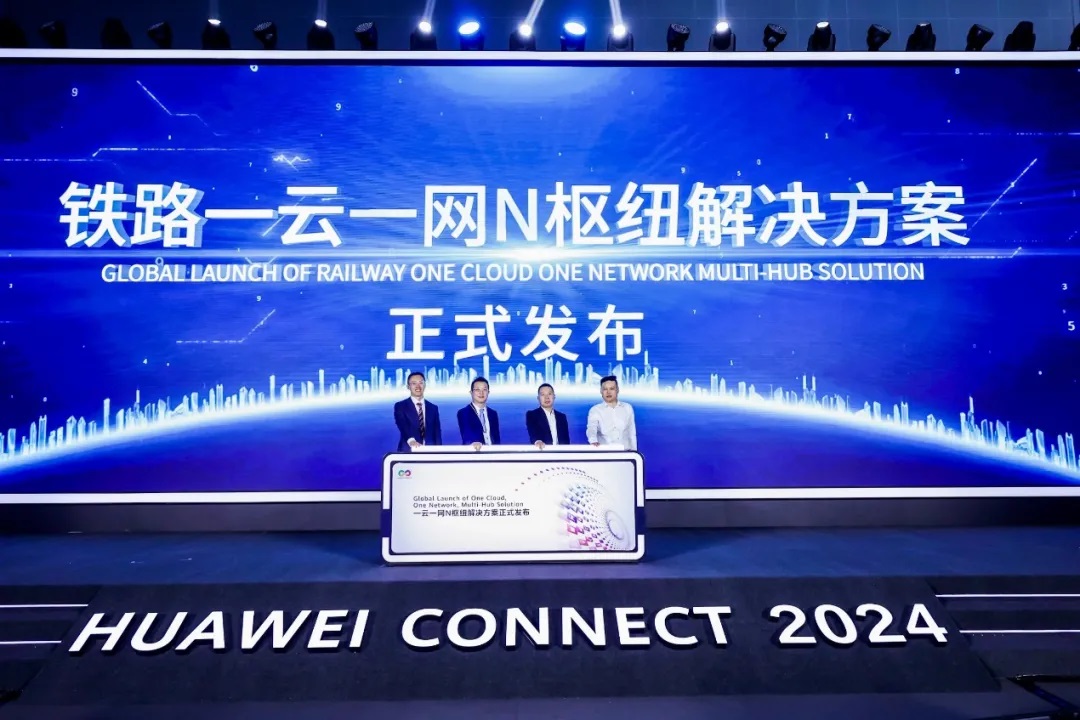
Transportation is on the brink of urgent transformation, driven by trends such as the Internet of Things (IoT), 5G, Big Data, AI and new energy.
Many in the transport industry have a similar vision — to provide safe, green, and efficient services that deliver customer satisfaction. To achieve it, companies and organisations must apply digital technologies across various scenarios and address the challenges the industry faces.
This is necessary in order to build a comprehensive transportation system, across all business architectures, business processes and transformation lifecycles. However, existing transportation enterprise structures and strategies cannot adequately support this transformation: structures are complex, data sharing is problematic and inter-departmental collaboration is sometimes difficult.
Digital transformation will accelerate all-round development, but cannot be achieved without planning and an over-arching vision, even if sometimes it faces internal resistance to significant changes, due to the impact on existing employment.
Added to this, a number of major, and sometimes competing, factors are in play: for instance, the Covid-19 pandemic, market conditions, policy makers and technology all drive the digital transformation of transportation enterprises and institutions.
The industry is also diverse in terms of modes (maritime, land and air); in services (passenger and logistics); and in sub-industries (road, rail, aviation, shipping and logistics). This diversity makes a full transition to comprehensive transportation rather complex.
The situation at present
Forrester Consulting has conducted an in-depth survey on the current state of digital transformation in the global transportation industry. The result is Digital Transformation Enables Comprehensive Transportation, a white paper looking at how we can get from here to there.
Responses from the transport leaders it surveyed reveal that the three most important internal forces driving transformation are: improving customer and passenger experience (65%), enhancing business and IT agility (49%), and improving operational efficiency (46%).
Frederic Giron, VP, research director, leads Forrester Consulting's China and South-east Asia research teams, focusing on the fundamental changes required to achieve the benefits of digital transformation.
“Most of the respondents agree that the future of transportation means breaking down the barriers between modes of transportation,” he explains. “The vision or ‘North Star’ for the digital transformation is to enable end-to-end flows of people, freight and data. In B2C scenarios, that means providing passengers with a better door-to-door travel experience. In B2B scenarios, this is about providing cargo with a more efficient, trusted and predictable end-to-end transportation.”
Giron is optimistic: “The good news is that most enterprises and organisations have begun their transformation across multiple functions.” In the survey, 40% of respondents are already transforming multiple functions and business processes, while 30% continue their transformation with iterations and optimisation of their operations.
Driven by the Covid pandemic, transportation enterprises have accelerated their digitalisation processes. Their current priorities are: building digital cloud platform infrastructures (71%); applying digitalisation to improve the operation and service of transportation infrastructures (66%); improving the insight and analysis capabilities of business and operations data (61%) and enhancing the connection and sensing capabilities of transportation equipment (55%).
The key to supporting infrastructure transformation is 4G network, cloud and Software as a Service (SaaS) technology, and most of those surveyed are deploying and expanding their deployment of these: 4G (95%), public cloud (87%), SaaS (72%), and private cloud (64%). In addition, more than 50% of the surveyed enterprises have deployed and are expanding IoT, hybrid cloud, optical network, and other key technologies.
Transforming multiple functions
Most enterprises and organisations have begun to transform multiple functions by adopting the Cloud. “The even better news is how firms grasp what this transformation really means for their organisation,” Giron suggests. “In the next one to three years, close to half of the respondents expect to achieve some results across functional units and will also focus on an ongoing, iterative cycle to keep on optimising the outcomes generated by this transformation.”
He points out that this is a really important distinction that more and more discerning business and technology leaders are making in the transportation industry. “Digital transformation is not your typical technology implementation project,” he adds. “It will impact your entire operating model across strategy, processes, talents, metrics, organisational structure and of course, technology. And there is no end date to this transformation.”
Digital transformation will deliver more intelligent and comprehensive transportation. According to the survey, more than 80% of transportation leaders believe that smart transportation will make logistics transportation more efficient, for example, including smart tracking and status sensing; it will also offer passengers a more personalised and convenient transportation experience, enabling new digital transportation infrastructure that features connectivity and awareness across the entire lifecycle of transportation.
“Sub-industries have different priorities for their digital transformation,” Giron notes. “The survey pointed out that the aviation industry seeks to improve operational efficiency and passenger experience through data convergence. Railways look to increase safety by upgrading their equipment and enhance data collection capabilities. The urban rail industry pursues increased profits through integration with municipal transportation resources. Urban and intercity roadways are working to integrate data to increase operational efficiency. The logistics industry extends supply chain capabilities to improve customer loyalty. And ports look to enhance connectivity between their information systems to improve operators' experience.”
Challenges and opportunities
Of course, such a massive transformation comes with huge challenges and a number of obstacles will have to be removed.
“Digital transformation is a multi-year journey that needs the vision, leadership and support of the entire organisation from the CEO and executive leadership to the middle management and the rank-and-file employees,” Giron says. “It starts with a clarity of vision (the North Star) also expressing the reasons why this transformation is crucial.”
Survey respondents believe that organisational culture structure (51%) and business-related issues (46%) are the primary problems during transformation – and headaches relating to data insight (46%), resources (37%), and technical capabilities (28%) still exist when implementing digital transformation.

Therefore, structure and culture are the first things to look at. “Digital transformation requires a unified digital vision as well as an effective organisational structure and culture to execute on this vision,” he continues. “The problem is that 73% of organisations believe their existing organisational structure can hardly support a comprehensive transformation (due to silos, lack of KPI alignment creating conflicts…) and 65% believe they lack a compelling vision for digital transformation.”
The second challenge is around unrealistic business expectations: bosses want results yesterday – or, at least tomorrow or, failing that, the day after. But this is highly unlikely to be possible: there is, after all, no blueprint and change will take time. And how will you know what success looks like?
“In most cases, firms will have to experiment their way to digital transformation success,” Giron says. “The issue here is that very few best practices or benchmark exist if at all. And transportation companies still lack the sufficient data and knowledge of the potential outcomes of a digital transformation to support their business case and prove the ROI.”
Indeed, 81% of respondents believe that the difficulty to proving the ROI of digital transformation measures in the short term is a major challenge for them. Many respondents believe it is difficult to select a suitable technology capable of solving their business difficulties (75%) and 70% say making choices regarding digital transformation priorities is not straightforward.
Giron advises that rapid experimentation, combined with storytelling and training, will help to address this.
The third big challenge is perhaps not surprising: data. “There are still a massive amount of investment and change management to be done around data and insights,” he goes on. “Most firms are still unable to apply data insights to the improvement of operational efficiency, safety and customer experience and learn from their actions.”
Again, the survey flagged up significant worries here; 80% believe that major data collection challenges exist. And even if data collection is possible, 76% think they will not be able to standardise and capitalise on it – while 86% say it is even more difficult to apply data insight to improve operational efficiency, safety and customer experience across different scenarios.
The problem is that, if they don’t have this insight-driven capability to test and learn from new insights – and cannot learn the business and customer value of their digital activities - they will remain stuck in their transformation.
Speeding up the transformation
“There is no end-date to a digital transformation initiative, but being able to measure success in terms of culture, organisation alignment and insights-driven capabilities can help the organisation understand whether they are making progress towards their North Star,” Giron adds.
It is possible to speed up the process, insists Giron, but organisations will need to work at it.
“Collaboration will be key,” he says. To be successful, stakeholders need to share a common vision of where they want to get to; they will also need a common language, giving them the ability to communicate seamlessly across different industries in ways that everybody understands. Technology interoperability is also vital: “Interoperability standards will help systems and technologies exchange data and ensure that the right insights can be delivered at the right moment across the transportation network ecosystem,” Giron adds.
There are encouraging signs. In the next 12-18 months, the surveyed enterprises say they will accelerate the deployment of Big Data (52%), edge computing (47%), AI and machine learning (46%), AR/VR (44%), video analysis (44%) and 5G (44%). And over the next one to three years, most expect to gradually shift from focusing on single business areas to comprehensive capacity building, thus increasing investment in emerging technologies.
“Every industry and every country is in a race to digitise their transportation infrastructure,” Giron says. “Success hinges on every participant to achieve the same level of digitisation. We still have a lot of work ahead of us!”
Impact of Covid pandemic
Respondents noted that the uncertainty caused by the global coronavirus pandemic has prompted transportation enterprises to build more agile digital solutions. Post-pandemic, enterprises will need to design transportation services that balance user safety with their convenience and experience. At the same time, most governments plan to upgrade their digital infrastructure technologies, such as 5G, IoT, and cloud, creating more room for the digitalisation of the transportation industry.
“The impacts of the pandemic and the resulting economic recession will create uncertainty in the market,” says Giron. “Therefore, the transportation industry needs to be more flexible, innovative, and cost-effective. The Covid-19 pandemic has significantly reduced the demand for passenger transportation, severely impacting the transportation industry. Uncertainty will persist for a long time, making innovation necessary. 87% of respondents believe that this uncertainty requires organisations claim to develop more agile solutions."
"This is promoting digital transformation. Similarly, the economic recession and the plummeting volume of global travel due to the pandemic is prompting businesses to innovate. To this end, 77% of respondents believe that the demand for innovation plays an important role in promoting the digital transformation of their organisations.”
Survey results indicate an increase in demand for public health and traffic safety, with 84% of respondents noting that this demand will promote successful digital transformation.
Given the investment required in AI, 5G, IoT and cloud capabilities for transport digitalisation to move forward, involvement will have to come from both private sector organisations and government institutions, Giron says. “Success will require a thoughtful and meaningful collaboration across every actors and stakeholders in the transportation ecosystem.”
Making predictions is always difficult, particularly in the field of technology, but one thing is for sure, he concludes: “We will continue to experience significant amount of uncertainty and change. One thing the Covid-19 crisis showed us is that companies that had made more progress on their digital transformation were better prepared to face the crisis. I hope that more companies advance their digital maturity over the next five years and can be better prepared for the new, unstable normal.”
Conclusion and recommendations
Huawei can help as a partner in the digital transformation process – and the prize is huge: comprehensive transportation can help guarantee door-to-door transportation and end-to-end transfer of goods, more efficiently, more safely, at lower cost and offering a better experience. Traffic flows – of passengers, cargo and vehicles – will be eased, with a focus on full-service architecture, full-lifecycle process and full-service value.
The new ecosystem can enable stakeholders to use different cooperation models, implementation planning, grassroots development or capabilities in software development, data governance and internet awareness.
But to achieve this businesses must:
Develop a global strategic plan and phased implementation goals -
with the understanding that economic value can be assessed from multiple dimensions, including internal management capability, customer and service experience quality, improvement of operational data analysis capability and optimisation of surrounding coordination mechanisms.
Establish an adaptive organisational structure -
transforming from a traditional hierarchical structure to a flexible resource pool, which is subject to adjustment based on the supply and demand for refined services.
Support ecosystem platform construction through a unified architecture -
adopting mature solutions that have been practiced multiple times in different scenarios and industries, as well as evaluating the universality of such solutions in upstream and downstream operations.
Achieve operations and innovation based on digital achievements -
building a digital business platform that enables enterprises to gain more agile operational capabilities, save money and improve efficiency is needed.
Huawei hosted the Industrial Digital Transformation Conference 2021 online last week to explore the power of the resilient and innovative digital world from three perspectives: business, technology and ecosystems.
Featuring a series of activities – from keynote speeches to forums and roundtables – the Industrial Digital Transformation Conference 2021 is an open and inclusive platform that serves as the backdrop for in-depth, ambitious dialogue.
For more information, please click here
Content produced in association with Huawei
In December 2020, Huawei commissioned Forrester Consulting to produce the Digital Transformation Enables Comprehensive Transportation white paper












